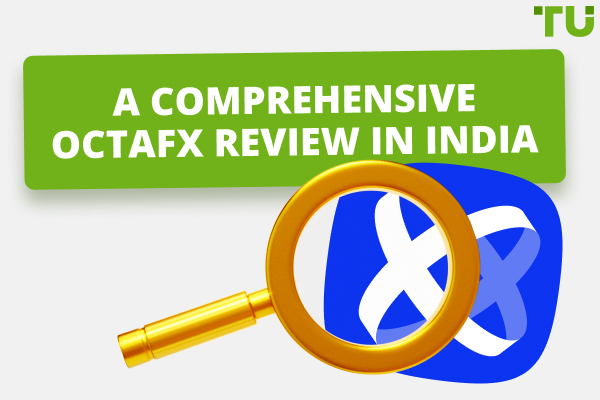
What is the Maximum Leverage on Saxo Bank?
Saxo Bank offers a variety of leverage options ranging from 20:1 to 30:1 for major and minor currency pairs and 10:1 for commodities and indices. Saxo Bank is a good choice for high-leverage trading due to its competitive leverage options and innovative platform.
Leverage in the financial markets refers to using borrowed funds provided by brokers to amplify potential returns. While leverage trading offers traders the opportunities for amplified profits, it also magnifies the risks of making significant losses. In this article, we discuss the leverage options provided by Saxo Bank, how leverage works, and tips on how to manage risk when trading with Saxo Bank.
-
What is the margin on Saxo Bank?
Saxo Bank offers an initial margin rate requirement starting from 4% to 100% for retail traders and 1.5% to 40% for professional traders.
-
How do I change leverage on Saxo Bank?
Saxo Bank allows traders to adjust their leverage settings manually through the dashboard.
-
What is the maximum leverage on Saxo?
Maximum Saxo Leverage depends on the selected asset class, pricing plan and regulatory restrictions. For example, in the UK maximum Saxo leverage limits for retail traders between 30:1 and 20:1 for major and minor currency pairs..
Saxo Bank leverage limitations
Saxo Bank EU Leverage
Traders Union Expert, Andrey Mastykin described Saxo Bank as a “prestigious multi-asset brokerage with outstanding analysis, a first-rate trading network, and a fantastic variety of more than 60,000 market products. With a vast array of premium services, research, and tools, Saxo Bank offers an immersive trading experience for individuals or active traders who can manage to keep substantial account balance criteria”.
The broker’s leverage is typically influenced by regional regulations established by financial regulatory bodies within the trader’s region. In other words, the maximum leverage available from Saxo Bank is determined by the financial regulatory bodies operating within a specific region.
Therefore, traders operating Saxo Bank in the EU, UK, and US, for instance, may have different leverage limitations. For example, the European Securities and Market Authority (ESMA) in the EU and the Financial Conduct Authority (FCA) in the UK have similar leverage limits for retail traders, which range between 30:1 and 20:1 for major and minor currency pairs.
Meanwhile, in the US, the Commodity Features Trading Commission (CFTC), for instance, set a maximum leverage limit for major and minor currency pairs to 50:1 and 20:1. Therefore, these restrictions may limit the maximum leverage ratios for traders within the region.
Saxo Bank Forex Leverage: Saxo Bank leverage ratios vary depending on the currency pairs traded. For example, major currency pairs have leverage up to 30:1, while the leverage for minor pairs is at 20:1.
Saxo Bank CFD Leverage: The leverage ratios on Saxo Bank for trading Contracts for Difference (CFDs) also vary based on the asset traded. For example, the leverage ratio for CFDs on major stock is 20:1, while the leverage ratio may vary for individual stock.
Saxo Bank commodities leverage: Saxo Bank offers varying leverages for trading commodities depending on the commodity traded. Therefore, Saxo Bank offers leverage between 10:1 and 5:1 for trading different commodities, including energy, agriculture, metals, and emissions on the platform.
Can I Trade Stocks with Leverage at Saxo Bank?
Yes, Saxo Bank offers leverage for stock trading, allowing traders and investors to control a larger position in a stock with smaller capital.
How to get high leverage on Saxo Bank?
To access higher leverage with Saxo Bank, traders need to create an account with the broker and meet the eligibility criteria, such as margin requirements.
Some peculiarities of leverage of Saxo Bank
The broker applies the method of multi-level margin. Only the minimum level has a fixed value, the actual leverage depends on the trading asset and risk level.
Saxo Bank offers a tiered margin method to control political and economic events that may lead to increased volatility in the market and sudden changes in trend. Margin requirements can vary depending on the underlying liquidity and volatility of the asset. Tiered margin operates in such a way that the average margin requirements (Mixed Margin Requirements) change with the level of risk: as the risk level decreases, the margin requirements decrease.
For example, for the most liquid currency pairs, during stable markets, less margin is required and leverage can be higher than the specification, e.g. 1:50 - 1:100. During periods of unstable liquidity, the risk increases and leverage is (automatically!) reduced to a nominal 1:10 - 1:30.
Reminder: margin requirements are subject to change without prior notice. In addition, Saxo Bank has the right to increase margin requirements for large volume positions, including client portfolios with suspected very high risk.
By default, all new clients are subject to retail client margin requirements - see here for more details. Clients who are within ESMA's regulatory jurisdiction can select the “elective professional” category to take advantage of lower margin requirements.
Saxo Bank Leverage Levels by Instrument
Here is an overview of leverage levels by instrument for Saxo Bank:
| instrument | Leverage |
|---|---|
1:30 |
|
1:20 |
|
Metals |
1:20 |
Shares |
1:10 |
CFD |
From 1:20 to 1:30 |
Commodities |
1:10 |
How does leverage work?
We have established leverage as a practice of utilizing borrowed funds provided by brokers to magnify potential returns. Simply put, leverage enables traders or investors to control a larger position with a smaller capital.
Brokerage firms provide borrowed funds to traders in the form of margin, allowing traders to open and maintain trading positions beyond their capital. The leverage provided by a broker is in ratios, such as 10:1, 20:1, 50:1, etc. For example, if an investor has $1,000 and uses 10:1 leverage, they can control a position worth $10,000.
However, because the investor is controlling a larger position with borrowed funds, any price movement will have a magnified effect on the account. For example, suppose an investor has a $1,000 capital in their Saxo Bank trading account and decides to use 10:1 leverage to control a position size 10 times larger, which is $10,000 ($1,000 of the investor’s capital + $9,000 borrowed funds). Now, if the trade position moves in the anticipated direction, the investor earns a higher return, but if it moves otherwise, the investor loses more from the $1,000 capital.
How to manage your risk when trading with leverage with Saxo Bank?
Here are some tips on managing risk when trading with leverage:
-
education. Learn and develop your trading strategies, risk management techniques, and trading psychology. Also, practice on the demo to test your strategy and get acquainted with the financial market.
-
use Stop Loss orders. The use of stop loss cannot be over-emphasized in financial trading. Always use it to mitigate losses.
-
position sizing. Execute trades based on a fixed risk tolerance and the leverage ratio provided by Saxo Bank. For example, you can use 2% of your account for all trades.
-
understand leverage risks. Leverage is a double-edged sword; use it with caution. Avoid excess leverage that can liquidate your capital.
-
use Risk-Reward ratios. Finally, stick to a proper risk-to-reward ratio with bigger gains and smaller losses, such as a 1:2, for instance.
Team that worked on the article
Joshua Francis is a professional Forex trader with 4+ years of experience in the financial industry. He trades the XAU/USD and GBP/JPY pairs. He is also a ghostwriter and author for Indicatorspot and Traders Union, where he puts his intensive research skills and deep knowledge of the financial markets into freelance writing.
Dr. BJ Johnson is a PhD in English Language and an editor with over 15 years of experience. He earned his degree in English Language in the U.S and the UK. In 2020, Dr. Johnson joined the Traders Union team. Since then, he has created over 100 exclusive articles and edited over 300 articles of other authors.
Mirjan Hipolito is a journalist and news editor at Traders Union. She is an expert crypto writer with five years of experience in the financial markets. Her specialties are daily market news, price predictions, and Initial Coin Offerings (ICO).









